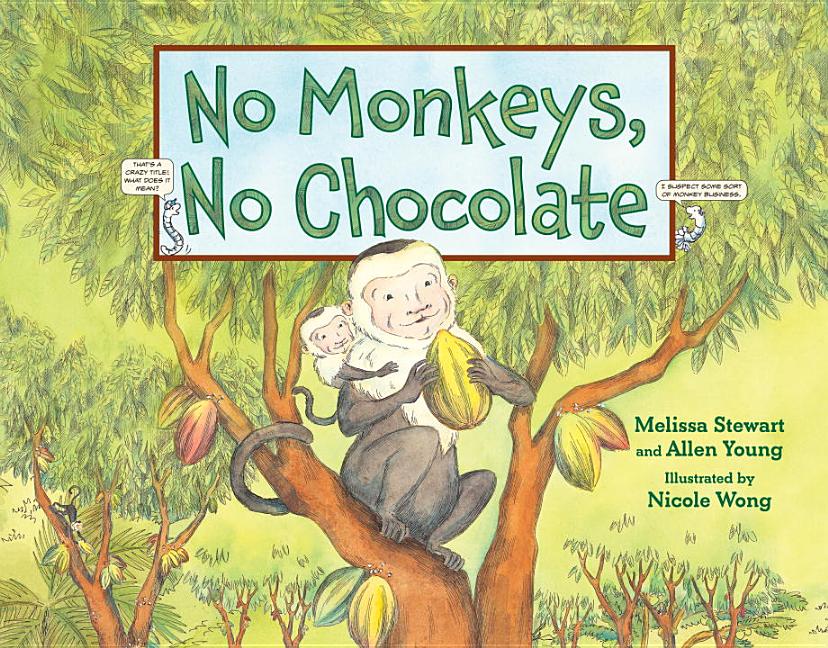Book Description
for No Monkeys, No Chocolate by Melissa Stewart, Allen Young, and Nicole Wong
From Cooperative Children's Book Center (CCBC)
An engaging look at the interconnected, interdependent nature of an ecosystem revolves around ... chocolate? Yes! Cocoa trees in the rain forests of Central and South America are a terrific example of how one life form depends on so many elements, and so many other creatures, to survive and thrive. You can't have chocolate without cocoa beans, which need cocoa pods, which form from cocoa flowers. The leaves on those cocoa trees provide food for the flowers, and those leaves need maggots. That's right. And the stems of those leaves need lizards, which eat damaging insects (no, not the maggots). Where do the monkeys come in? If it weren't for monkeys, new cocoa trees wouldn't grow, because the only way cocoa seeds spread is by animals pulling the pods down and ripping them open to eat the insides, leaving the seeds behind. Each page spread expands on a single element of this process that is part of the cumulative life force of the ecosystem that gives us chocolate. (Ages 5-9)
CCBC Choices 2014. © Cooperative Children's Book Center, Univ. of Wisconsin - Madison, 2014. Used with permission.


